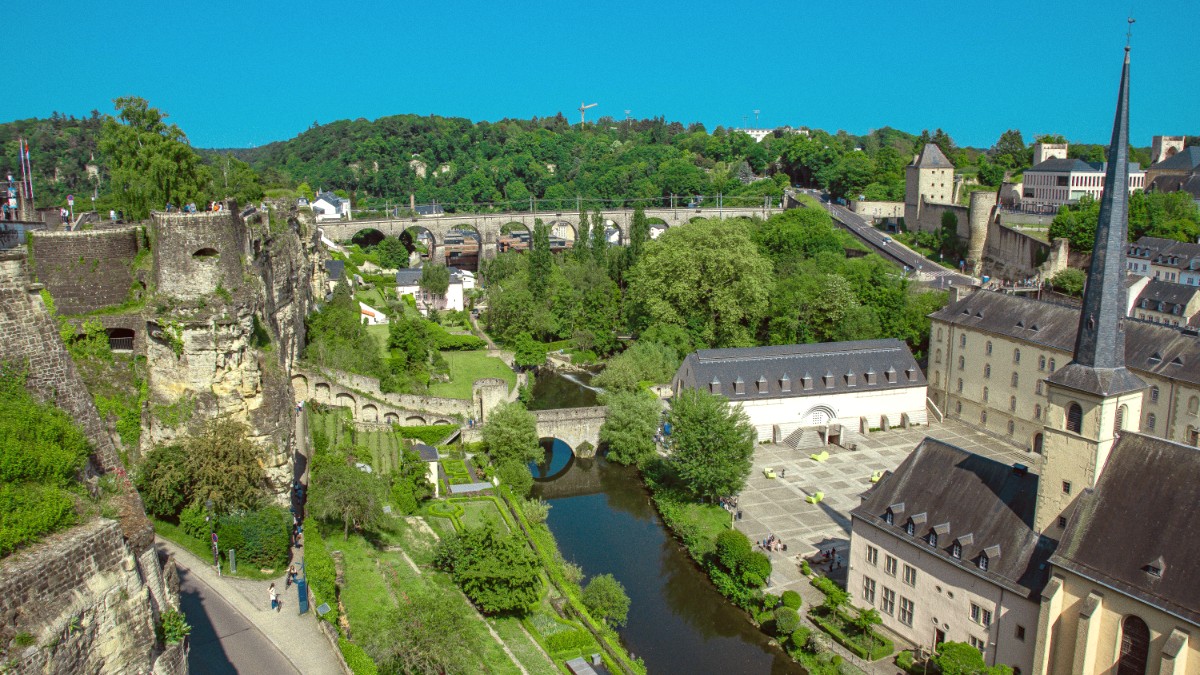
Luxembourg
The city's multi-layered layout, with its upper town (Ville Haute) standing proudly above the lower quarters of Grund and Pfaffenthal, creates a visual spectacle. Sunlight shifts across ancient ramparts and historic homes, highlighting the city's unique topography. Every path here brings a fresh view, where echoes of the past meet the pulse of the present. Cultural immersion, historical exploration, or a peaceful escape all find a welcoming atmosphere and a wealth of discoveries. It feels both grand and intimate, a testament to its long history and forward-looking spirit. Its beauty and story invite enchantment.
Luxembourg City is an UNESCO World Heritage site, famous for its impressive fortifications and the historic Old Quarters.
The city's dramatic ravines and plateaus create a distinctive landscape. Features include the Bock Casemates, the Grand Ducal Palace, and the panoramic views from Chemin de la Corniche.
Luxembourg City sits in the heart of Western Europe, a compact nation bordered by Belgium, France, and Germany. Its geography greatly shapes its distinctive character. The city itself rests on a dramatic landscape carved by two rivers, the Alzette and the Pétrusse. These rivers have created deep gorges, forming steep cliffs and dividing the city into distinct upper and lower sections.
The historic upper town, or Ville Haute, occupies a plateau, presenting commanding views across the valleys. Below, in the river valleys, lie the picturesque districts of Grund and Pfaffenthal, connected to the upper city by a series of bridges, elevators, and winding paths. This layered topography means walking through Luxembourg City involves ascents and descents, often rewarding visitors with stunning panoramic vistas.
To the north, rolling hills, dense forests, and deep river valleys support hiking and outdoor pursuits.
To the east, vineyards stretch across gentle slopes, producing renowned white wines and sparkling crémants.
Central and southern parts present a more agricultural and gently undulating terrain.
The compact geography allows for easy exploration of diverse landscapes, all a short distance from the capital.
Proximity to Paris, Brussels, and Frankfurt places the city strategically within an European city network.
The city's dramatic natural setting forms a backdrop for its historical fortifications and modern developments. Geographical features are integral to its appeal.
The Alzette and Pétrusse rivers define the city's unique landscape, creating picturesque gorges and dividing the upper and lower towns.
The Ville Haute sits on a plateau with expansive views, while Grund and Pfaffenthal nestle in the valleys below, connected by various bridges and lifts.
Luxembourg City's distinct geographical character contributes significantly to its charm and the overall visitor experience.
Luxembourg City is a history stretching back over a millennium. This history shapes it into the complex and intriguing place it is today. Its origins trace to a Roman castellum and later, in 963 AD, to the construction of a castle on the Bock promontory by Count Siegfried.
This strategic location, high above the Alzette River, made it a natural stronghold, earning it the nickname, the "Gibraltar of the North." Over centuries, various European powers—including the Burgundians, Spanish, French, Austrians, and Prussians—occupied and fortified the city. Each left an architectural mark, adding layers of defenses, from the Casemates (underground tunnels) to impressive bastions. These fortifications made Luxembourg City one of Europe’s most formidable fortresses, a testament to its military importance.
Foundation of the castle in 963 AD on the Bock promontory.
A nickname for its formidable fortress status.
Successive occupations by various European powers.
The 19th century brought significant change. Following the Congress of Vienna in 1815, Luxembourg gained independence as a Grand Duchy. Its neutrality was declared in 1867, a declaration that led to the dismantling of most of its massive fortifications. This act transformed the city, opening space for urban expansion and the creation of beautiful parks and bridges.
Medieval fortifications meet modern European institutions.
Deep valleys and high plateaus form the city's natural setting.
A reflection of its international finance sector and EU presence.
Visitors hear a mix of French, German, Luxembourgish, and English daily.
The city's multicultural character creates an inviting environment.
A true gem at the heart of Europe, perfect for diverse travel desires.